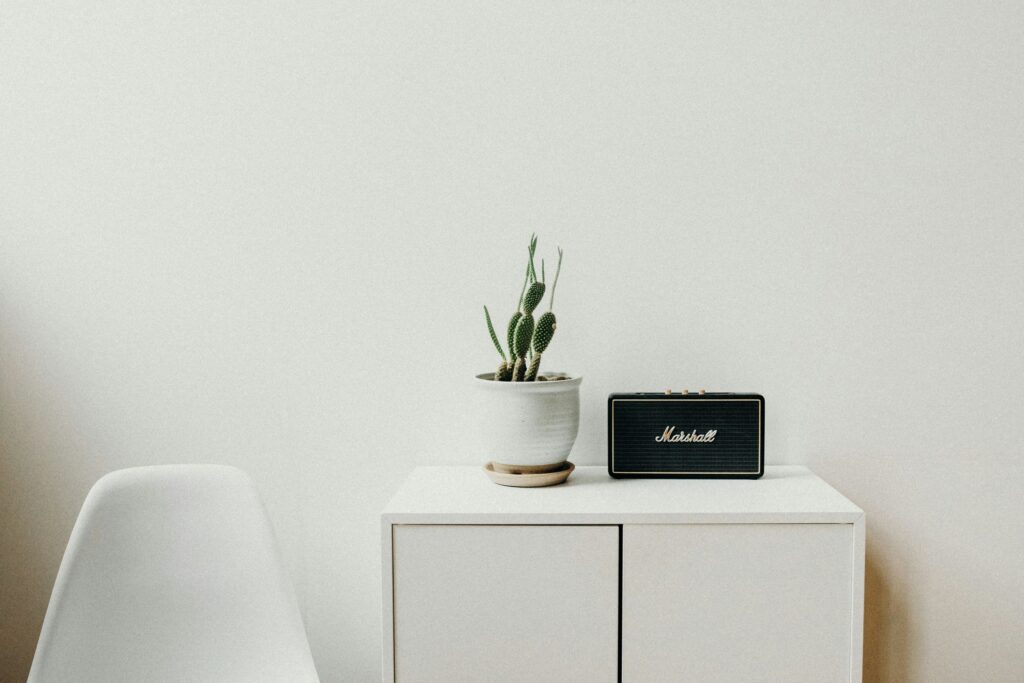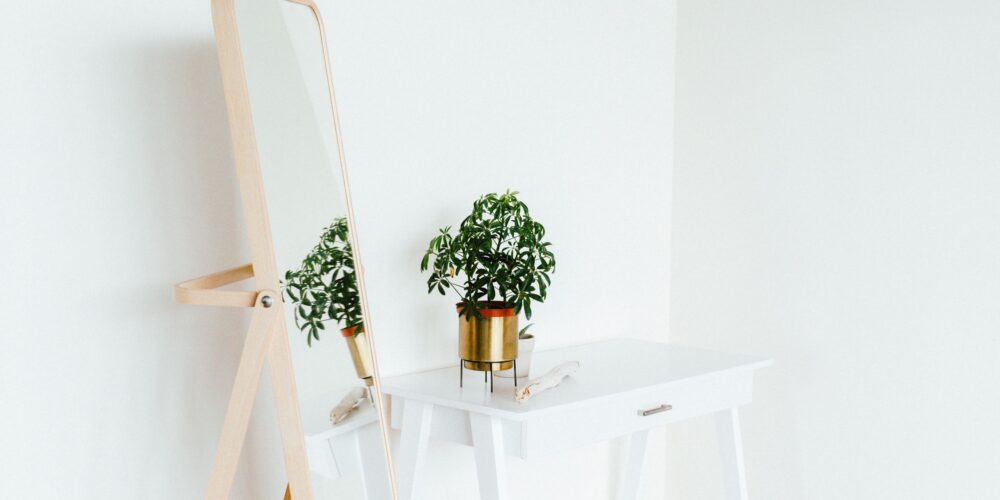In the 1970s, there was a push to produce more food to feed a growing population. The government urged farmers to ramp up production and they responded by producing a lot more food. This led to a significant increase in food production. From the late 1970s to 2000, the average daily calorie supply per person skyrocketed from 3200 to 4000.
Now, the challenge was how to sell all this excess food. And that’s where things got interesting.
To sell all these calories, food companies had to make their products irresistible. Portion sizes got bigger, food formulas were tweaked to make us want to eat more, and products were made to be extra appealing—crunchy, colorful, and loaded with additives to make them taste amazing. All this was done to get us to eat more without even realizing it.
This is explained by Marion Nestle, a food studies and public health professor at New York University, in a documentary called “Live to 100: Secrets of the Blue Zones,” which we’re currently watching on Netflix.
If you’ve been following our blogs for some time, you might remember Blue Zones from our earlier blog “Humans Today vs. Humans 100 Years Ago: How Technological Advancements Have Impacted Our Health and Lifestyle”.
What Marion explains here accurately captures what’s happening with us “consumers”. Companies have clever minds constantly working and finding ways to make us crave and buy more. The food today has become super attractive, fast, and has a great mouthfeel. That’s why about 41% of Americans struggle with obesity.
Think about your last trip to the supermarket. Ever notice how everything is set up to make you buy more? The layout is carefully planned to lead you past certain items.
They offer free samples to tempt your taste buds. They pair things together like chips and soda, or pasta and cheese, to make you grab both. They even put sugary cereals right at kids’ eye level, with enticing cartoon characters staring back at them.
And it doesn’t stop there. Supermarkets strategically offer discounts if you buy more than one, like getting 20% off when you buy three items. And as you wait in line at the checkout, you’re surrounded by candy bars and sodas – perfect for impulse buys.
As a result, most of us end up buying way more than we actually need. Our homes become cluttered with stuff we bought on a whim. We spent money on things we didn’t really plan to buy, and now we’re stuck trying to find space for it all.
This pattern shows how clever marketing tactics can lead us to overconsume and accumulate more than we truly want or need. It’s all because these companies know exactly how to tap into our desires.
But recognizing this is the first step towards breaking the cycle. Do you find yourself surrounded by things you don’t really use? Are you craving a simpler, less cluttered life?

This is precisely where minimalism comes in. Welcome to our blog series on minimalism and simplicity, a concept that embraces a more intentional and fulfilling way of living. The goal of this series is to explore minimalism and simplicity in detail and understand how they can help us lead a simpler and more meaningful life.
This first blog is an introduction to the concept of minimalism, a lifestyle philosophy that encourages you to live with less and focus on what truly matters.
But let’s first understand what minimalism is not.
Table of Contents
What Are Some Common Misconceptions About Minimalism?
For someone who has never heard about minimalism, the first natural thought is that it must be something about owning fewer things. While it may be partially true, minimalism often gets a bad reputation and is misunderstood as an extreme lifestyle where you own next to nothing and live in a stark, empty space.
Some people think that if you’re a minimalist, you can’t own more than a hundred things. Or you can’t have a house or a car. Another myth is that minimalism is only for certain types of people, like those who live alone or without families.
There’s also a misconception that minimalists can’t be collectors or have hobbies. Lastly, minimalism is often thought to be only about physical possessions.
All these myths and beliefs couldn’t be further from the truth. The concept of minimalism is not a fixed set of rules or guidelines that you must follow. It’s not about conforming to a generic definition. Instead, what minimalism means can differ from one person to another, depending on their individual preferences, values, and lifestyle choices.
Let’s take a deeper dive into the concept of minimalism and understand what it truly entails.
What Is the Concept of Minimalism or Minimalism Philosophy?
Minimalism is a lifestyle philosophy where you’re intentional or mindful about the choices you make in every aspect of your life. At its core, it’s not about owning lesser things or giving away your possessions, but about focusing on the things that truly matter and removing the distractions that negatively impact your life.
Here are some of the key principles of Minimalism:
Embracing Intentionality
One of the central beliefs of minimalism is being intentional in every aspect of life. It’s about being deliberate and mindful in your choices, whether it’s about the things you own, the activities you do, or the relationships you have.
By being intentional, you align your actions with your values and priorities, leading to a more authentic and meaningful life. By consciously creating your lifestyle, you can cultivate deeper connections, pursue meaningful experiences, and focus on the things that resonate with your core beliefs.
Decluttering Physical And Mental Space
We live in a world filled with constant stimuli and distractions, where big companies are working very hard to get us to overbuy. A minimalist approach on the other hand advocates for simplifying complexities. It is not only about being mindful of the things you buy but also about letting go of the things you don’t need.
It is about decluttering not just your physical but also your mental space. By systematically reducing unnecessary things you own and eliminating the distractions around you, you create a more harmonious and intentional living environment.
When you declutter your surroundings, you clear up mental space and energy for what truly matters in your life.
Prioritizing Quality Over Quantity
Another key principle of minimalism is intentional consumption. Instead of mindlessly buying everything you like, the focus should be on the things that serve a purpose and bring genuine joy. It’s about prioritizing quality over quantity and investing in things that are durable, functional, and aligned with your needs.
This mindful approach will not only reduce waste and prevent overcrowding but also foster a greater sense of appreciation for the things you choose to bring into your lives.
The same applies to your time and energy as well. Minimalism encourages you to invest your time and energy only in activities and experiences that enrich your life and contribute positively to your well-being.
Pursuit of Freedom
In today’s world, most people have this misconception that happiness and fulfillment come from owning more and constantly acquiring possessions. We all work very hard to make ends meet and earning good money is very important but this belief that owning more means a better life leads to a relentless pursuit of material wealth.
However, this notion is fundamentally flawed. Minimalism challenges this belief by offering a path to freedom from the endless cycle of consumerism.
It encourages you to reevaluate your priorities and recognize that true happiness is not found in material possessions but in meaningful relationships, enriching experiences, and taking care of your well-being. By being a minimalist, you can break free from the pressure to accumulate things and instead focus on what truly matters.
Our modern lifestyle often leaves us feeling overwhelmed, stressed, and disconnected despite being constantly busy and connected through technology. Minimalism allows you to step back from this hectic pace, slow down, and appreciate the present moment.
It empowers you to declutter your lives, both physically and mentally, by prioritizing the essentials and letting go of the unnecessary.
What Is Minimalism Lifestyle?
A minimalist lifestyle is where you see and approach every aspect of your daily life through the lens of minimalism. Let’s take a closer look.
Minimalism at Home
Imagine coming home to a peaceful clutter-free environment where every space serves its purpose without unnecessary distractions. A space where your couch is empty for relaxing, the table is clear for use, and your bed is properly made up.
Applying minimalism at home is about decluttering spaces like living rooms, bedrooms, closets, and even digital spaces like your phone or computer. You create a peaceful environment that promotes relaxation and focus by simplifying your surroundings.
Simplifying Your Schedule
A minimalist approach to scheduling means prioritizing important tasks and activities while letting go of non-essential commitments. This creates more time and space in your day for meaningful activities like spending time with loved ones, pursuing hobbies, or simply taking moments for self-care and relaxation.
Financial Minimalism
Managing money through a minimalist lens is about intentional spending and prioritizing investments that align with your values and goals. By reducing unnecessary expenses and focusing on what truly matters, you free up resources to fund experiences, projects, or ventures that bring fulfillment and joy.
Quality Relationships
As we learned in the previous section, minimalism focuses on quality over quantity and that extends to relationships as well. It involves nurturing positive, supportive connections while distancing from toxic or draining relationships. By surrounding yourself with people who uplift you, you create a more fulfilling and enriching social circle.
Digital Decluttering
In today’s digital age, minimalism applies to managing digital clutter as well. This includes organizing emails, apps, files, and digital devices to minimize distractions and maintain a clear digital environment. By decluttering digitally, you enhance productivity and reduce the stress that comes with information overload.
What Are the Benefits of Minimalism?
While minimalism has a lot of benefits that positively impact the different aspects of life, let’s take a look at a few of them.
Reduced Stress
One of the primary benefits of minimalism is less stress. When the space around you is cluttered and overcrowded, it can make you feel anxious, overwhelmed, and stressed.
Minimalism encourages you to have a simplified living environment where you only have the things you really need, organize your space, and create a sense of calmness. Having a tidy and organized environment can lower your stress levels and improve your mood.
Also, minimalism encourages you to prioritize your mental health by letting go of unnecessary commitments and obligations. You learn to say no to activities or events that add unnecessary stress to your life. This practice of setting boundaries and focusing on what truly matters to you contributes to a more balanced and stress-free lifestyle.
More Free Time
Another benefit of minimalism is the gift of time. By simplifying your lives and possessions, you can free up valuable time that would otherwise be spent on managing and maintaining clutter. For example, a cluttered home often requires frequent cleaning and organizing that will consume hours of your week.
With minimalism, you can reduce the need for excessive cleaning and organizing which will allow you to spend that time on activities you enjoy or with your loved ones.
Also, minimalism encourages you to be mindful of how you spend your time. If you learn to focus only on activities and commitments that align with your values and goals, it will lead to a more purposeful use of your time. This intentional approach to time management can result in increased productivity and a greater sense of accomplishment.
Better Finance Management
When you adopt a minimalist mindset, you’re more mindful of every purchase you make. You question everything you buy, like whether this item is truly necessary or not. This mindful habit leads to reduced spending on unnecessary items and a focus on investments that bring long-term value and happiness.
Additionally, you prioritize your savings, investments, and experiences that contribute to a better future and overall well-being rather than chasing material wealth. This shift in mindset will make you better at managing your finances and can lead to greater financial stability.
Better Focus And Productivity
A clutter-free environment improves focus and concentration. When your physical spaces are organized and free of distractions, you can better focus on tasks and activities that require your attention.
Minimalism encourages you to create designated spaces for work, relaxation, and creativity which will eventually optimize your environment for productivity. You will spend less time searching for items or dealing with clutter which will give you more time to do meaningful work and projects.
Moreover, minimalism is an exhaustive concept that extends beyond physical clutter to mental clutter as well. When you practice mindfulness and learn to let go of unnecessary thoughts and worries, you develop a mindset that is clearer and more focused. This mental clarity allows you to approach tasks and challenges with greater focus and efficiency.
Improved Well-Being
When you declutter your surroundings and simplify your life, you create an environment that has a positive impact on your mental, emotional, and physical health.
Minimalism also encourages you to prioritize self-care by focusing on activities and experiences that are good for your mind, body, and soul, and this exhaustive approach to well-being will have a positive impact on your overall quality of life.
Better Relationships
When you only invest your time and energy in meaningful relationships, your social circle and the quality of relationships increase. You learn to appreciate the value of genuine relationships by eliminating the toxic ones and you nurture connections with those who bring joy, fulfillment, and support.
You create space for deeper conversations and shared experiences which leads to stronger bonds and a greater sense of connection with others.
Clarity and Purpose
Finally, minimalism gives you clarity and purpose in life. You get a deeper understanding of the things that truly matter to you and you get clarity on your goals, values, and aspirations.
Minimalism encourages you to focus on the essential aspects of life that bring you joy, fulfillment, and meaning. You let go of distractions and societal pressures and embrace a lifestyle that aligns with your authentic selves. This clarity and purpose lead to a more fulfilling and purposeful way of living.
There you have it, the benefits of a minimalist lifestyle. When you develop a minimalist mindset, you can create a life that is simpler, more intentional, and filled with purpose and fulfillment.
Now the next thought you may have is how do I start living a minimalist lifestyle? You might be thinking “My house is filled with stuff that I haven’t used in over a year, my head is always filled with all kinds of thoughts, is it even possible for me to live a minimalist lifestyle?
How to Start Living a Minimalist Lifestyle?
Minimalism is not a one-size-fits-all concept but rather a personalized journey toward simplicity and intentionality. As we explored the concept of minimalism in the initial sections, we need to understand that minimalism will manifest differently for each individual.
If you ask a hundred people to show minimalism based on their values and priorities – you’d likely end up with a hundred unique interpretations.
What makes minimalism so attractive is that it is flexible and adaptable to your individual needs and preferences. It allows you to curate your life according to what matters most to you. The essence of minimalism lies in identifying your core values and then aligning your actions and possessions with those values.
It’s about intentionally choosing what adds value and meaning to your life while letting go of anything that becomes a distraction in your journey toward fulfillment.
Now, let’s explore practical strategies and insights on how to embrace minimalism in various aspects of life.
Declutter Your Space And Mind
The first step towards a minimalist lifestyle is to declutter your mental and physical space. Decluttering your physical space is about simplifying your surroundings, getting rid of excess belongings, and organizing what remains in a way that promotes calmness and functionality.
It might sound overwhelming at first but don’t be, you don’t have to do everything all at once. It’s a process, and all you have to do is to follow it consistently. To declutter your physical space, you can start small and find one thing to let go of each day.
This slow and gradual approach will help you declutter without being overwhelmed.
Decluttering your mental space on the other hand is about clearing your mind of the negative or overwhelming thoughts that lead to the feelings of stress and anxiety. One effective technique is mindfulness meditation which encourages you to be present in the moment, acknowledge your thoughts without judgment, and let go of unnecessary mental baggage.
We have an entire series on mindfulness so if you’re interested, please give it a read.
There are other ways to declutter your mind, like journaling and practicing gratitude. In journaling, you write down your thoughts, feelings, and emotions which helps you see them from a distance so you can organize them, gain clarity, and identify patterns where you can simplify or let go.
Practicing gratitude is another powerful way to declutter your mind. Focusing on what you’re grateful for shifts your perspective from scarcity to abundance, helping you appreciate what you have and reducing the desire for more material possessions.
Minimalistic Consumption
Minimalistic consumption challenges the notion that more is always better. It is about being mindful and intentional of your purchasing decisions and focusing on quality rather than quantity.
One key strategy in minimalistic consumption is limiting yourself from being exposed to triggers that lead to impulsive buying. This would include unsubscribing from commercial emails, avoiding unnecessary shopping trips, and setting self-imposed limits on spending.
Another aspect of minimalistic consumption is aligning your purchases with your existing needs and values. Instead of accumulating items that serve no meaningful purpose, only buy things that complement your lifestyle and add genuine value.
This approach will not only reduce clutter but will also promote mindful consumption habits that prioritize long-term satisfaction over fleeting desires.
Minimalistic Scheduling
We live in a world that glorifies busyness but minimalistic scheduling stresses upon prioritizing quality over quantity. It is about understanding that doing more doesn’t necessarily lead to better results. Instead, doing less but meaningful tasks with focus and consistency leads to greater outcomes.
Mastery requires concentration, and one of the key practices in minimalistic scheduling is assigning one priority each day. This priority becomes your anchor task that guides your day. It will help you ensure that essential responsibilities are addressed first.
The power of choosing one priority lies in its ability to streamline decision-making and focus. It serves as a compass that will direct your energy towards what truly matters. When you organize your day around this priority, you create a sense of clarity and purpose and avoid distractions and unnecessary busyness.
Minimalistic Goal Setting
Minimalistic goal setting is about channeling all your energy and attention into a select few objectives. It is about acknowledging that true mastery and success come from dedicating focused effort to important tasks, rather than spreading yourself thin across different things.
When you prioritize and remove non-essential tasks, you create space for deep work and meaningful progress.
The essence of minimalistic goal setting is in making deliberate choices about where to invest your time and resources. It’s about committing to a few pivotal goals and directing your efforts toward achieving them with purpose and clarity.
With a focused approach, you’ll not only be more productive but you’ll also feel more satisfied and accomplished as you follow through on your goals.
Wrapping Up – Minimalism: A Journey of Intentional Living
As we wrap up this blog on minimalism, we want you to understand that minimalism is a journey of intentional living that is not just about owning fewer things, but about cultivating gratitude, living intentionally, and finding contentment in what you already have.
In this blog, we touched on the essence of minimalism, from decluttering physical spaces to decluttering minds. The key is to appreciate the present moment, focus on what matters, and live a life aligned with your values and aspirations.
Gratitude and intentional living are the keys to a minimalist lifestyle. By appreciating what you have and making thoughtful choices, you gain more time, financial freedom, and a deeper sense of fulfillment.
It’s a journey of self-improvement that leads to a harmonious balance between what you have and your well-being while emphasizing quality over quantity in all aspects of life.
When you first start on the path to minimalism, it can be a little challenging as it requires shifts in mindset, habits, and actions. However, as you progress on this path, it becomes more natural and rewarding.
At its heart, it is about clarity and purpose. It’s not about lacking but rather about living authentically and intentionally.
While adopting a minimalist lifestyle can lead to tangible benefits like more time and financial freedom, it’s important to understand it’s a gradual journey. It’s about making mindful choices, practicing gratitude, and embracing simplicity in all areas of life.
Minimalism allows you to shape your life according to your own values, focusing on what brings you happiness and letting go of what doesn’t.
The idea behind this blog was to inspire and encourage you to think about minimalism and to do your research on how it can benefit you personally. We’d love to hear your thoughts and experiences. Namaste!







Leave a Reply